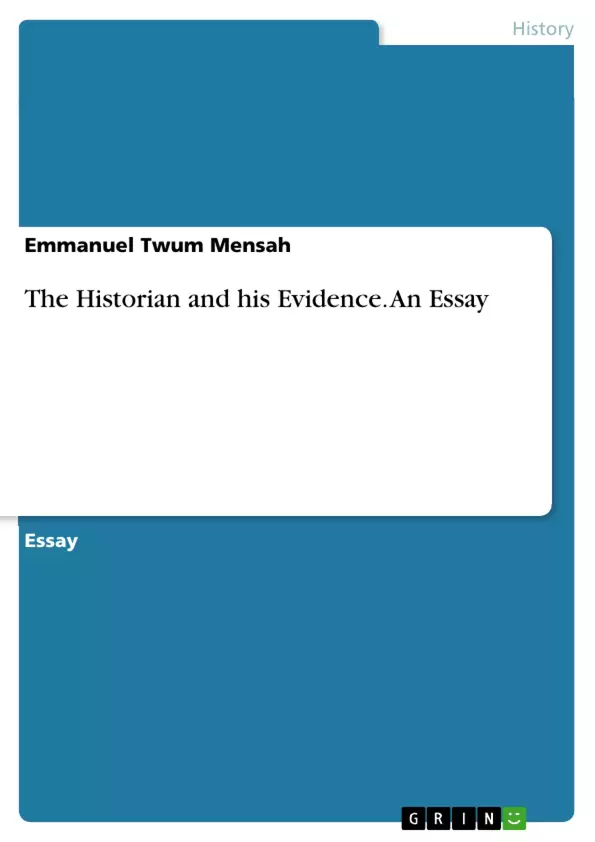The reconstruction of the past has always been dependent on evidence from events of the past. This means that history cannot be written without evidence. Evidence used in history can be defined as “materials” that gives signs or proofs of the existence of historical events. However, the accumulation of evidence alone doesn’t make history as they must be supported with interpretation by the historian.
The relationship between the historian and the evidence used in historical deconstruction is one of the major themes in history today. Historical reconstructing can be explained as “studying history at its most basic level” and “value” as used in the question means the significance of the evidence in historical explanation of past events. This essay seeks to explain why the evidence used in historical deconstruction owes its value to the interpreter of sources with three main points namely; it is the historian who pick the evidence, the historian interprets the evidence and it is the historian who organizes and present the evidence to his readers.
Inhaltsverzeichnis (Table of Contents)
- The Evidence Used in Historical Deconstruction Owes Their Value to the Interpreter of Sources. Discuss.
Zielsetzung und Themenschwerpunkte (Objectives and Key Themes)
This essay explores the crucial role of the historian in interpreting and giving value to evidence used in historical deconstruction. It argues that the historian's selection, interpretation, and presentation of evidence are fundamental to understanding the past.
- The historian's role in selecting evidence.
- The historian's role in interpreting evidence.
- The historian's role in organizing and presenting evidence.
Zusammenfassung der Kapitel (Chapter Summaries)
The essay begins by defining "evidence" in the context of historical deconstruction and emphasizing the importance of the historian's role in interpreting it. The author then explores three key aspects of the historian's role: selection, interpretation, and presentation of evidence.
The essay argues that the historian's selection of evidence is crucial, as it determines which aspects of the past are brought to light. The author uses examples to illustrate how the historian's choice of evidence can influence the narrative.
The author further emphasizes the historian's role in interpreting evidence, arguing that interpretation is not simply about stating facts but about understanding their meaning and context. The essay explores how the historian's biases and perspectives inevitably shape their interpretations.
Finally, the essay discusses the historian's role in presenting evidence, arguing that the narrative structure chosen by the historian can significantly impact the reader's understanding of the past. The author provides examples to illustrate how chronological arrangement of facts can influence historical interpretations.
Schlüsselwörter (Keywords)
Historical deconstruction, evidence, interpretation, selection, presentation, historian, narrative, bias, context, chronology.
- Quote paper
- Emmanuel Twum Mensah (Author), 2016, The Historian and his Evidence. An Essay, Munich, GRIN Verlag, https://www.grin.com/document/317459



